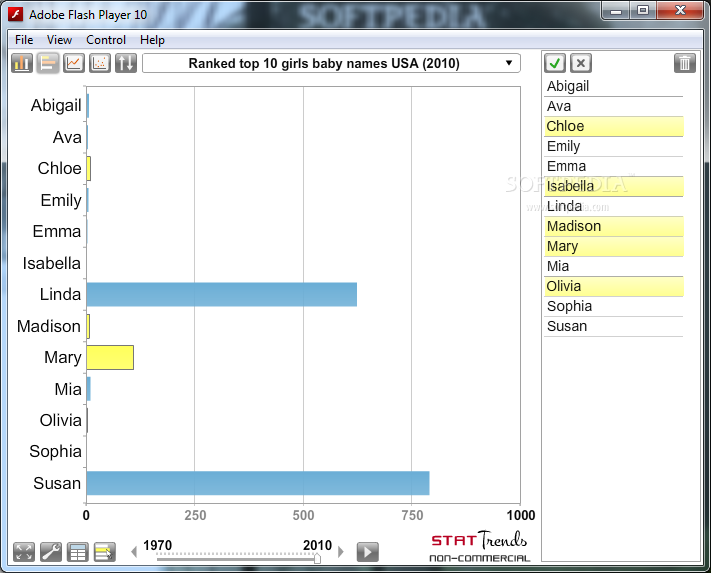

Data can be based off a Google Spreadsheet, Google Fusion Table, Salesforce database, or practically any data source that can be queried using AJAX or JSON. Google Charts ( Figure D) is an HTML5-based API offering a variety of chart types - pie, bar, line, tree map, and many others - with a wide array of customizable attributes, including colors, labels, and graphical appearance. Ambitious developers can even create their own plugins to share with the community. The advanced features include custom plot point symbols, axes customization, data thresholding (red light – green light), and more. Then, you can add in dynamic (dashboard-like) enable/disable of chart series, click-and-drag rectangular zooming, click support, tooltips, panning, and resizing, all via various plugins. It starts with line or scatter charts that can be static or dynamic and that allow you to customize colors, text, and other aspects. Figure B 3: Flotįlot ( Figure C) is a simple jQuery-based graphing utility with a massive array of options. Developing for this framework is a little more involved than the others on this list, but the results can really be worth it.
Free graph builder program full#
The examples gallery is chock full of basic graph types as well as interactive and animated graphs, a massive array of specialized visualizations, and even a few graphical games. This gives you a framework to create nearly any type of visualization.

It’s really a full DOM framework, much like jQuery, that takes the W3C API and makes it much more manageable. Figure A 2: D3.jsĭ3.js ( Figure B) is not just a graphing application. If you want to use dynamic data, replace the value in the “chart_data” variable with a custom-generated XML dataset.
Free graph builder program code#
When you’re finished, simply copy the generated HTML code into your page to display your Flash-based graph. However, it comes with a nice visual editor that allows you to paste in sample data in a CSV format (which it then converts to XML) and manipulate the settings all while watching your graph take shape. It offers only the basic options for the most common types of charts. 1: amChartsĪmCharts ( Figure A) is perhaps the simplest of the tools on this list. Note: This article is also available as an image gallery and a video hosted by TechRepublic columnist Tom Merritt. So take a look at each webpage and browse through the examples provided to see the power of each of these tools. Each of these apps offers a vast number of options and lots of customizability, more so than I could possibly demonstrate here.
Free graph builder program free#
In this edition of Five Apps, we take a look at five free web-based tools for creating different types of graphs from dynamic data. Plenty of options are available to graph hard-entered data, but few are capable of dynamic generation. What’s more difficult is creating those graphs to be published on the web based on dynamic data. Here are five free tools that will deliver great results.Ĭreating graphs is easy - grab your favorite spreadsheet program, enter some data, and use the chart wizard. The sky's the limit when it comes to building flashy dynamic charts and graphs. Create real-time graphs with these five free web-based apps


 0 kommentar(er)
0 kommentar(er)
